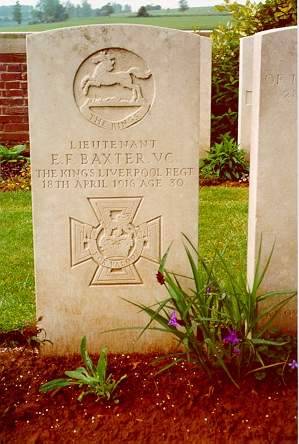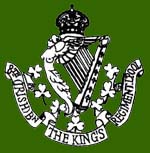The Liverpool Irish have their roots in the invasion
scare caused by the French Navy commissioning La Gloire, the first ironclad.
In the UK there was a large movement to create volunteer forces to defend
the country against French invasion, and these volunteer rifles were raised
in their thousands. Tens of thousands of Irish emigrants to England had
settled in Liverpool, and from this community the Liverpool Irish Regiment
was raised. The roots of the regiment go back to an advert in the Liverpool
Echo in December 1859 calling for Irishmen to rally for the defence of
Britain. The Regiment was organised as the 64th Lancashire Rifle Volunteers
in January 1860 and later renumbered nationally as the 18th Rifle Volunteers,
marking her as the 20th in seniority of the reserve infantry forces (The
Royal Monmouthshire Militia and Honourable Artillery Company preceded the
Rifle Volunteers).
With the Cardwell reforms the Kings (Liverpool) Regiment
was formed from the 8th infantry and the Liverpool Irish became the
5th (Irish) Volunteer Battalion, the Kings (Liverpool) Regiment and then
the 4th Volunteer Battalion. During the Boer War the regiment supplied
draughts to the Kings and the Royal Irish Regiments. In 1908, the militia
and volunteers were organised into a single body, the Territorial Force
and the Liverpool Irish were redesignated the 8th (Irish) Battalion, The
Kings (Liverpool) Regiment (Volunteer). In 1914 the 8th Kings was part
of the Liverpool Brigade of the West Lancashire Brigade, redesignated 1/8th
(Irish) Kings with the raising of a 2nd Battalion.
The 1st Battalions' combat debut came in 1915 with the
transfer to the elite 51st Highland Division at the Second Action of Givenchy.
They were returned to the 55th (West Lancs) in time for the 1916 Somme
Offensive and fought throughout the Battle of Passchendaele in 1917. At
Cambrai they were witness to the worlds first Tank attacks. They were in
the line during the Kaisers Battle of 1918 before the final advance to
Artois,
after which the 1st and 2nd battalions were amalgamated.
The 2nd Battalion was part of the 57th (2nd West Lancs)
Division, a copy of the 55th. The 2nd Battalion of the Liverpool Irish
was at Passchendaele with her sister Battalion, was in the first wave at
Arras before fighting through the Hindenburg Line offensive, finally capturing
Cambrai, as the Tank Corps had failed to do. During the final advance to
Artois the 1st and 2nd battalions were amalgamated.
A 3rd Battalion was raised, but was a reserve battalion
kept in the UK, but did send draughts to the two active combat battalions.
It was disbanded at the end of the war.
912 volunteers of the Liverpool Irish did not return from
the Great War. The Regiment was placed into limbo on 31st March 1922 with
the disbandment of the fighting battalion, although it was not disbanded
as the band of the regiment was still existent. With war with Germany looming,
the Territorial Army was doubled in size, as it had been at the start of
the Great War and the Liverpool Irish was reraised as the 8th (Irish) Battalion,
The Kings Regiment.
Their moment of glory was on D-Day, when the Liverpool
Irish was the spearhead battalion of the entire Canadian Corps, while attached
to the 3rd Canadian Division. Their bravery in charging across a minefield
to take German strongpoints is credited with allowing the Division to land
safely without the massive casualties inflicted on the US forces at Omaha.
An account of this action was survived here.
After the war, the Regiment was transferred from the infantry
to the artillery as 626 Heavy Anti-Aircraft Regiment in 1947. In 1955 it
was reduced to Q (Liverpool Irish) Battery, 470 (3rd West Lancs) Light
Anti-Aircraft Regiment. The amalgamation of the Territorial Army and Volunteer
Reserves in 1967 saw a further reduction to A (Liverpool Irish) Troop,
208 (3rd West Lancs) Battery, 103 RA (The Lancashire Artillery Volunteers).
In 2001 the Liverpool Irish converted from air defence to field artillery,
reviving the infantry traditions of yesteryear.
Pop Quiz Fact
The Liverpool Irish won a VC in the Great War, that
of 2Lt Edward Felix Baxter. Lt Baxter's VC was unfortunately posthumerous
and won on the night of the 17th/18th April 1916 during a trench raid in
preparation for the Somme offensive.


